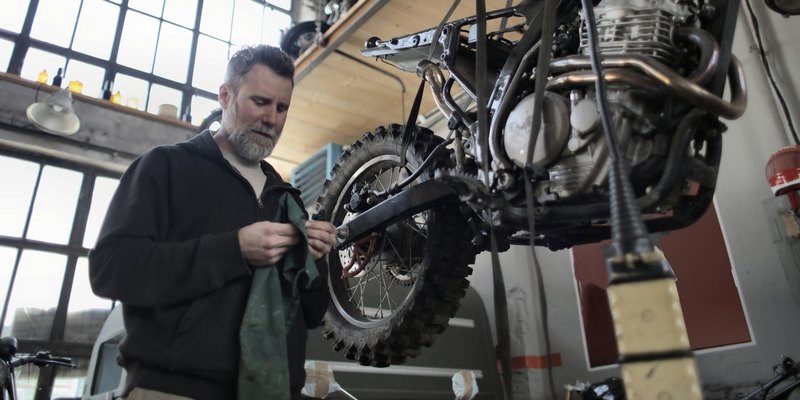Reviving Your Bike’s Ignition

If you’ve ever wondered about that mysterious resistor in your motorcycle’s ignition switch, you’re in the right place. In this guide, we’ll explore why it’s there when it’s essential, and how to bypass it if necessary.
Understanding the Ignition Resistor
Why is there a resistor in your ignition switch? It’s a simple yet effective anti-theft device. The resistor’s role is to thwart potential thieves attempting to hot-wire your bike. But how does a tiny 100-ohm resistor achieve this? It’s all about the wiring.
The resistor sits between the ignition switch and the CDI (Capacitive Discharge Ignition). It limits the voltage supplied to the CDI to around 9V. Your bike’s ECU detects this lower voltage and allows power to the spark plugs. However, if someone tries to hot-wire your bike, the full 12 volts is applied, and the ECU intervenes, preventing the spark plugs from firing.
Why Bypass the Ignition Switch Resistor?
Resistors are generally reliable and rarely fail. However, if your ignition switch resistor does malfunction, your bike won’t start. Everything else will appear normal – lights, instruments, etc. – but the bike will only turn over without starting.
Bypassing the Ignition Switch Resistor
If you’re feeling adventurous and have some electrical know-how, you can attempt this DIY project. However, if you’re uncertain, it’s advisable to seek professional assistance.
Parts and Tools You’ll Need:
- 100-ohm, 1/2-watt resistor;
- Soldering iron and solder;
- Wire of the same gauge as your current switch wire;
- Heat shrink tubing;
- Heat gun (or a hairdryer in a pinch).
Resistor Bypass Process
- Remove the ignition switch: The original resistor is usually located on the bottom of the ignition switch. Consult your bike’s manual for guidance on removal;
- Locate the wiring side: You’ll need to work on the ignition switch wiring side rather than the main loom. Avoid tampering with the main wiring loom.
Steps to Bypass the Ignition Resistor:
- Identify the wire connected to the resistor (typically grey on most Kawasakis);
- Disconnect or cut this cable to remove it from the ignition switch;
- Identify a switched power cable from the ignition switch – it should only have voltage when you turn the key;
- Connect the resistor between the switched power supply and the cable removed in step;
- Solder the connections and protect them with heat shrink tubing.

Comparative Table
| Step | Description |
|---|---|
| 1 | Identify the resistor wire (usually gray). |
| 2 | Disconnect or cut the wire from the switch. |
| 3 | Find a switched power supply wire in the switch. |
| 4 | Connect the resistor between the power supply and the cut wire. |
| 5 | Solder the connections and use heat shrink for protection. |
| 6 | Verify that your bike starts before reassembling. |
Video Guide
To give you an even more detailed understanding of this topic, we have prepared a special video for you. Enjoy watching it.
Conclusion
In conclusion, understanding how to bypass a Kawasaki ignition switch resistor is a valuable skill for motorcycle enthusiasts. While the resistor serves as a security feature to deter theft, a failure in this component can lead to frustrating starting problems.
By following the outlined steps and using the necessary tools, you can effectively bypass the ignition switch resistor and restore your bike’s ability to start. However, it’s essential to exercise caution and, if unsure, seek the assistance of a professional mechanic.
This DIY solution not only saves you potential repair costs but also empowers you to troubleshoot starting issues independently. Remember that the 100-ohm resistor may not be present in all Kawasaki models, so it’s wise to check your specific bike’s configuration.
In the world of motorcycles, having the knowledge and skills to address common issues like this can enhance your riding experience and keep your bike in top condition. So, if you ever encounter starting problems that seem mysterious, don’t forget to consider the ignition switch resistor as a possible culprit.
By staying informed and proactive, you can keep your Kawasaki bike running smoothly and enjoy countless trouble-free rides on the open road. Always prioritize safety and follow best practices when working with your motorcycle’s electrical components.
